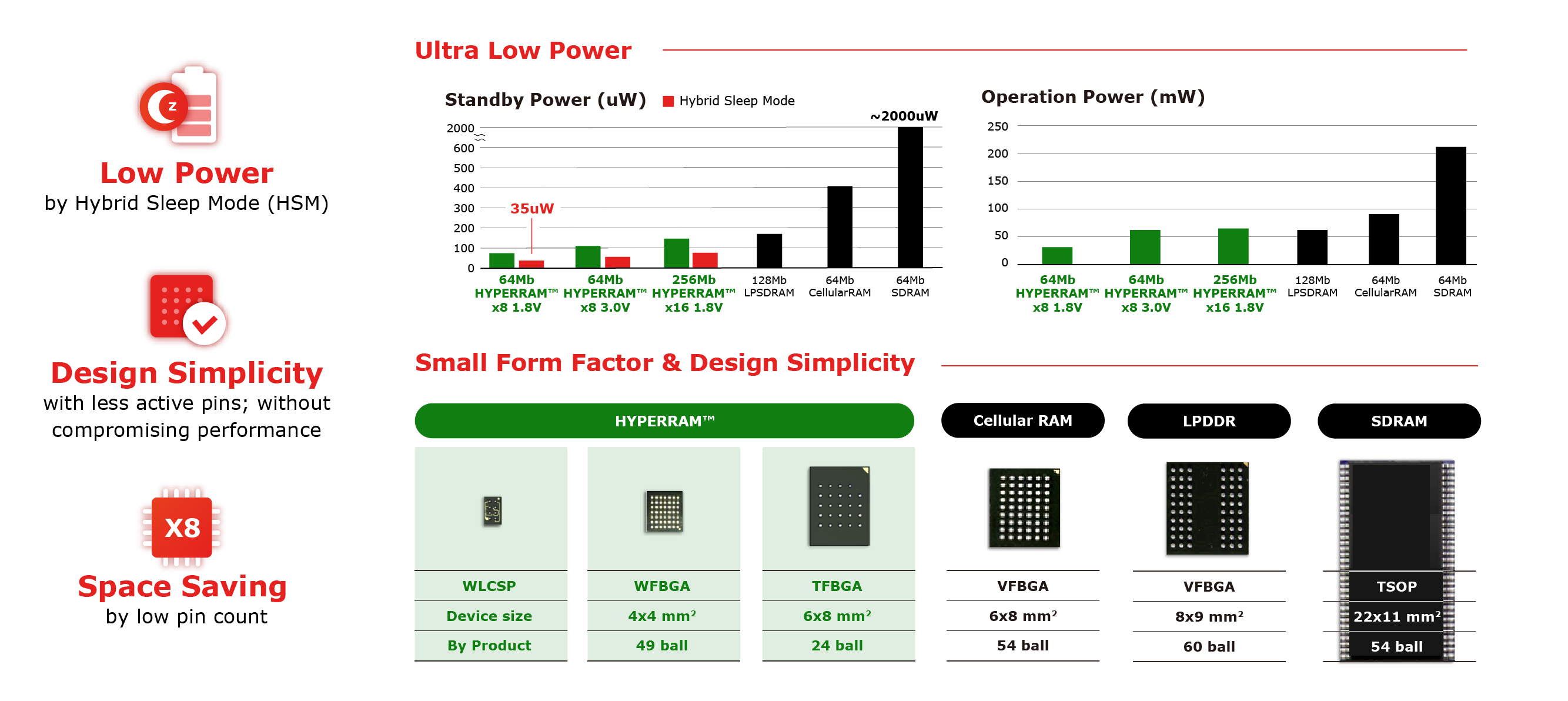Pseudo SRAM
Pseudo-Static RAM (PSRAM) merges the advantages of dynamic RAM (DRAM) and static RAM (SRAM). By integrating an internal refresh circuit, PSRAM eliminates the need for external data-refresh operations, providing higher memory density, faster access speeds, and smaller chip size compared to traditional SRAM. This makes PSRAM ideal for use in IoT wearables, portable smart devices, and low-power applications requiring efficient, compact memory solutions.
Winbond offers sophisticated PSRAM solutions specifically optimized for wearable IoT devices, characterized by:
- Memory density options starting from 64Mb
- Operating voltage between 1.7V and 1.9V
- x16 memory organization
- Clock speed of 133 MHz with random access time of 70 ns
- Deep power-down sleep mode to significantly extend battery life
- Partial-array self-refresh functionality and adjustable drive strength (½ and ¼) to further reduce overall power consumption
- Flexible address/data multiplexing (ADM) or parallel (ADP) interfaces for simplified circuit designs and reduced pin count
SEARCH FOR THE PRODUCT SPEC
Winbond’s PSRAM chips provide a perfect balance of performance, energy efficiency, and compactness, well-suited for modern wearable technologies and IoT innovations.
HYPERRAM™
Winbond HYPERRAM™ products provide a compact alternative to traditional pseudo-SRAM in IoT and consumer devices, automotive and industrial equipment. The introduction in 2021 of HYPERRAM™ devices produced on Winbond’s 25nm process extends densities up to 256Mb and 512Mb. For package type, HYPERRAM supports 24BGA, WLCSP and KGD.
- Ultra-low Power Consumption: Winbond’s Hybrid Sleep Mode (HSM) gives standby power consumption as low as 35μW, and operating power less than half that of equivalent pSRAM products.
- Design Simplicity: HYPERRAM™ devices use just 13 signal pins, compared to 31 signal pins in pSRAM. This makes the board layout much simpler to design and manufacture.
- Space-saving: Low pin-count packages and a lower number of connections to the host controller reduce the memory system’s board footprint and save space in consumer devices such as smart watches.







